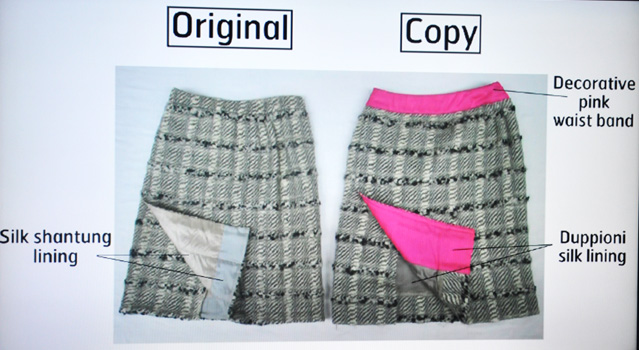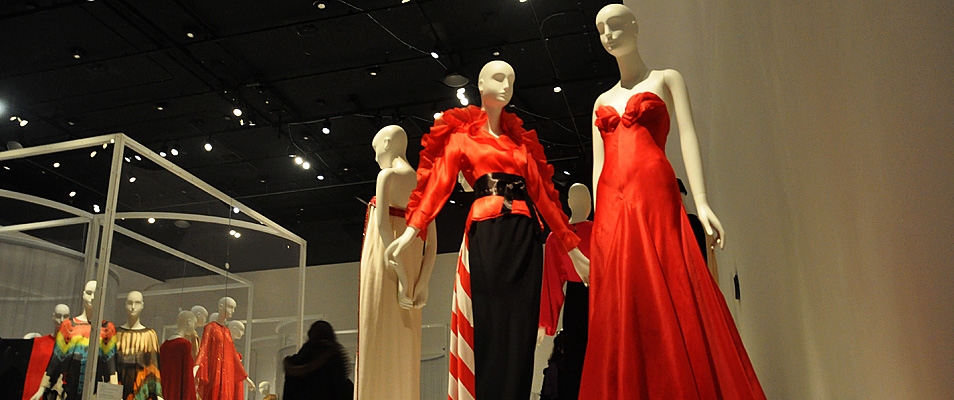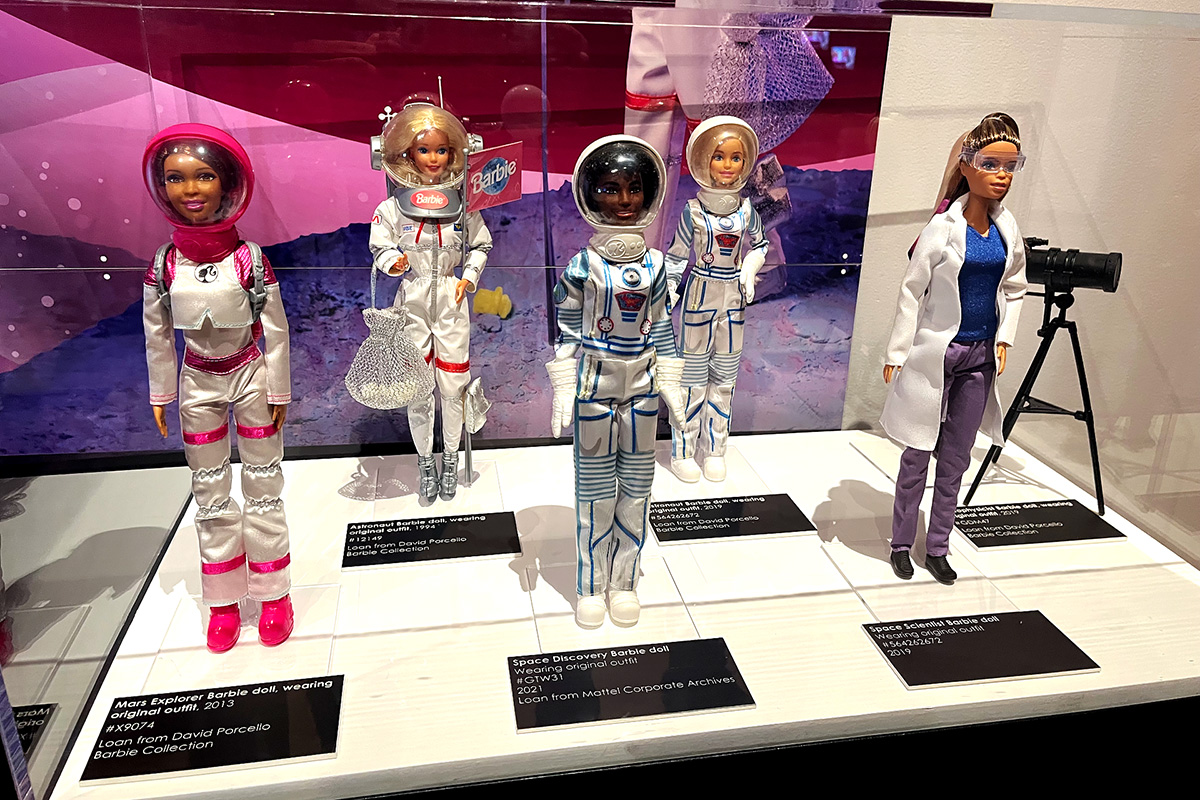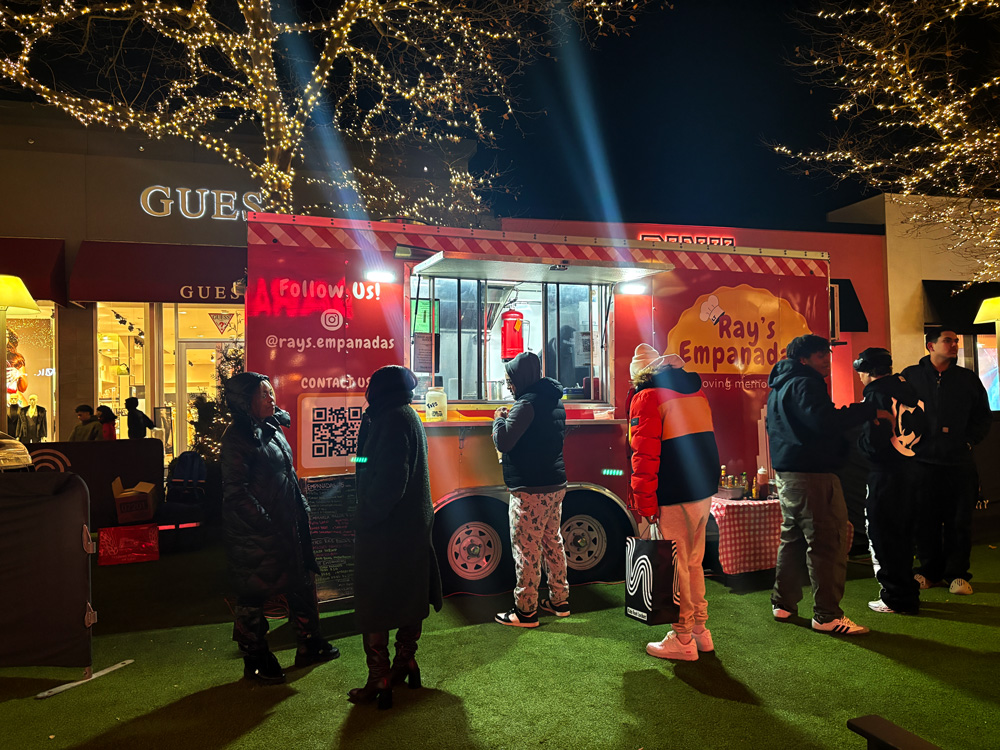By Christopher Figueroa
Yves Saint Laurent and Roy Halston helped pioneer ‘70s fashion, a decade of significant change in the industry. Women were shortening their hemlines and no longer listening to the laws of the mythical fashion police. Saint Laurent and Halston had similar ideas in the early ‘70s. Drawing from its permanent collection, the Fashion Institute of Technology juxtaposes the two in a recent exhibit.
Patricia Mears, deputy director at the Museum at FIT, said they were initially considering juxtaposing Halston’s work with that of a contemporary artistic figure, such as Andy Warhol, but they decided against it. “I suggested we pair Halston with the other great fashion designer of the era, Yves Saint Laurent,” said Mears. “Because they were at the height of their careers during the 1970s, it was logical that we focus on that decade.”
Walking into the exhibit feels like entering the closet of icons such as Princess Diana and Jacqueline Kennedy Onassis. Opulent designs are followed by menswear for women. Saint Laurent created the Le Smoking, a woman’s tuxedo, which helped inspired the trend of menswear for women, a theme in both of the designers’ portfolios for the decade. Next came the safari jacket and pinstripe “gangster” suits. Halston also dipped his toes in the gender bending pool with the famous Ultrasuede shirtwaist dress.
The exhibit continued with theatrical Chinese and Russian-inspired pieces. The Saint Laurent evening caftan in black velvet was as delicious as a red velvet cake. Its gold trim and sleeves added elegance to a simple design.
The exhibit took just over a year to produce, said Mears. It helped, she said, that all the objects in the exhibition were from the permanent collection of Museum of FIT, so the exhibit required no loans, which is typical of most large-scale shows.
The final lap of the exhibition showed Saint Laurent and Halston’s affairs with past periods of fashion history. Saint Laurent drew upon the everyday Parisians in the ‘40s while Halston flirted with designs from women around periods of the World Wars.
Mears said two exhibit pieces particularly resonated with her — Halston’s lavender cashmere, floor-length cardigan and dress and a deep red jersey caftan. “The first was inspired by Mainbocher’s cashmere cardigan and sleeveless shell made during World War II,” said Mears. “Halston took that idea and turned it into a luxurious and cozy evening ensemble. The latter, a caftan made for Lauren Bacall, is simple but very refined. Both garments illustrate Halston’s unparalleled ability to make clothes that were beautiful, elegant, and comfortable. He was and remains America’s great modernist.”
Also featured at FIT was a second exhibition, Faking It: Original, copies and counterfeits. Unlicensed knock-offs have become synonymous with the fashion industry. One of the most sought after designers, Gabrielle “Coco” Chanel, dealt with the tidal wave of counterfeits in a positive way. Chanel has said she saw the copying of her designs as publicity and was flattered by the repeats of her famous tweed suits. “If mine are copied, so much the better. Ideas are made to be communicated.”

One of the standout displays is the side-by-side Chanel flannel skirts. A television displayed the differences between the real deal and a popular counterfeit. Jessica, who had been to the exhibit twice said, “I am glad my friend brought me here the first time I came, because I was in the process of buying my first Chanel bag and now I know how to decipher between real and fake.”
































No comments